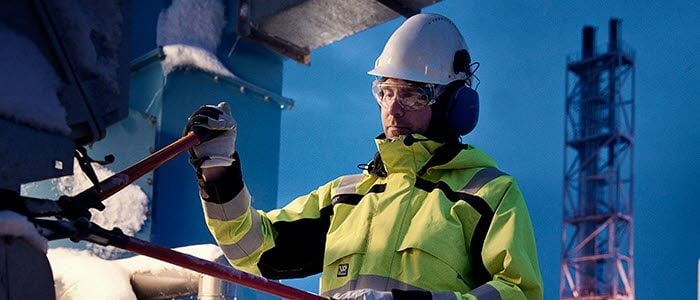The activities of the Norwegian petroleum industry are moving north into Arctic areas. Year-round activity in these areas involves more challenging climatic conditions. The main objective of the Arctic Protection project was to develop new workwear and personal protective equipment (PPE) for petroleum workers operating in Arctic areas, to ensure that the personnel can execute their work in a safe and efficient manner in these cold and demanding conditions. The project focused on developing workwear optimised for petroleum workers operating in the Norwegian part of the Barents Sea, and the ambient conditions and exposures related to year-round operation in this region.
Arctic Protection has followed a user-centred design process, where the needs and preferences of the users have been given extensive attention at each stage of the design process. The new designs are based on in-depth knowledge and understanding of the target users and their work situation, to develop usable and practical products with improved user-satisfaction and performance. Petroleum workers have been involved in establishing insights, concept development and design evaluations. Methods of co-design have been adopted to involve users in development of new design solutions. Wenaas and Devold produced prototypes which were field tested by petroleum workers during the winters of 2014/15 and 2015/16.
The initial mapping of the user's needs and preferences documented that workers experience challenges related to adequate weather protection (wind and moisture), efficient temperature regulation and thermal comfort (especially stationary work). It was identified a need for light workwear for the active worker suitable when exposed to considerable wind and moisture, including adjustable level of insulation to avoid overheating during high intensity work, and insulated garments for temporary low intensity work.
The multilayer workwear system includes wool base layers, two types of wool-based mid-layers and three outer layer garments, including a weatherproof GORE-TEX PYRAD outer shell. An Arctic balaclava and two different work gloves have been developed as well. The final field test documented a high degree of user satisfaction, which indicates that the new garments have attractive, relevant and practical functionality and performance.

In addition, several studies have been conducted in the SINTEF Work Physiology Laboratory during the project to evaluate and document thermal responses and clothing properties, and to provide knowledge input to the concept development. These studies have documented the positive thermal effect of using windproof workwear compared to traditional air-permeable cotton coveralls. The thermal properties of the 4-layer Arctic Protection workwear setup has been tested in conditions of -25 °C (WCT). ISO 11079 recommends a duration of exposure of maximum 30 minutes in these ambient conditions. The Arctic Protection workwear maintained thermal comfort within acceptable limits for a minimum of 60 minutes during normal work.
